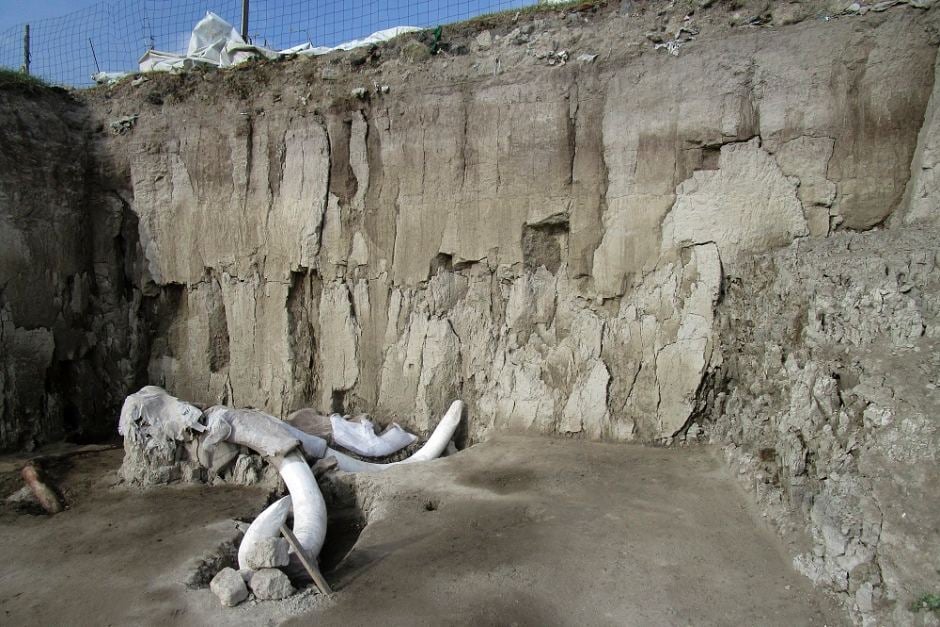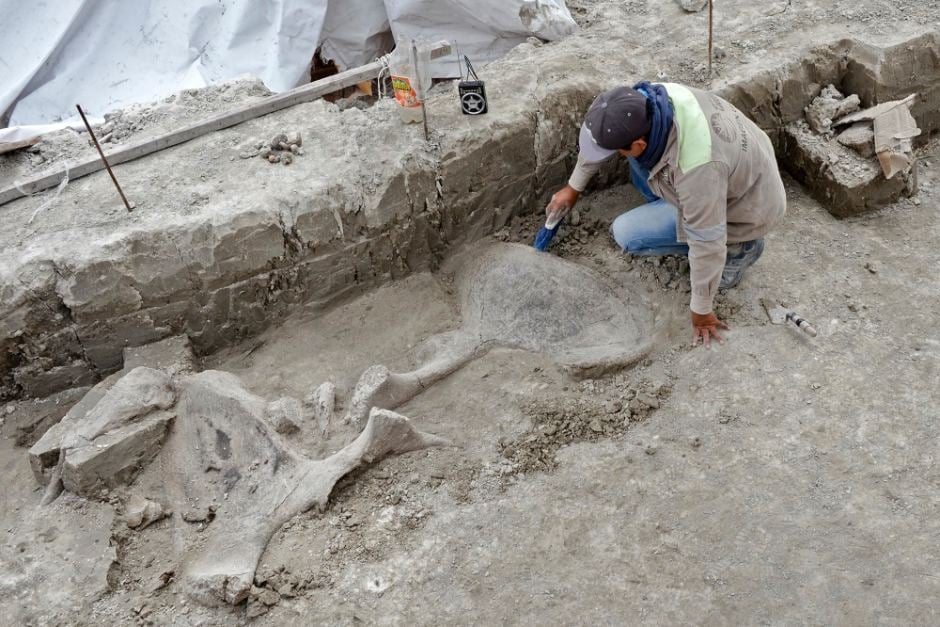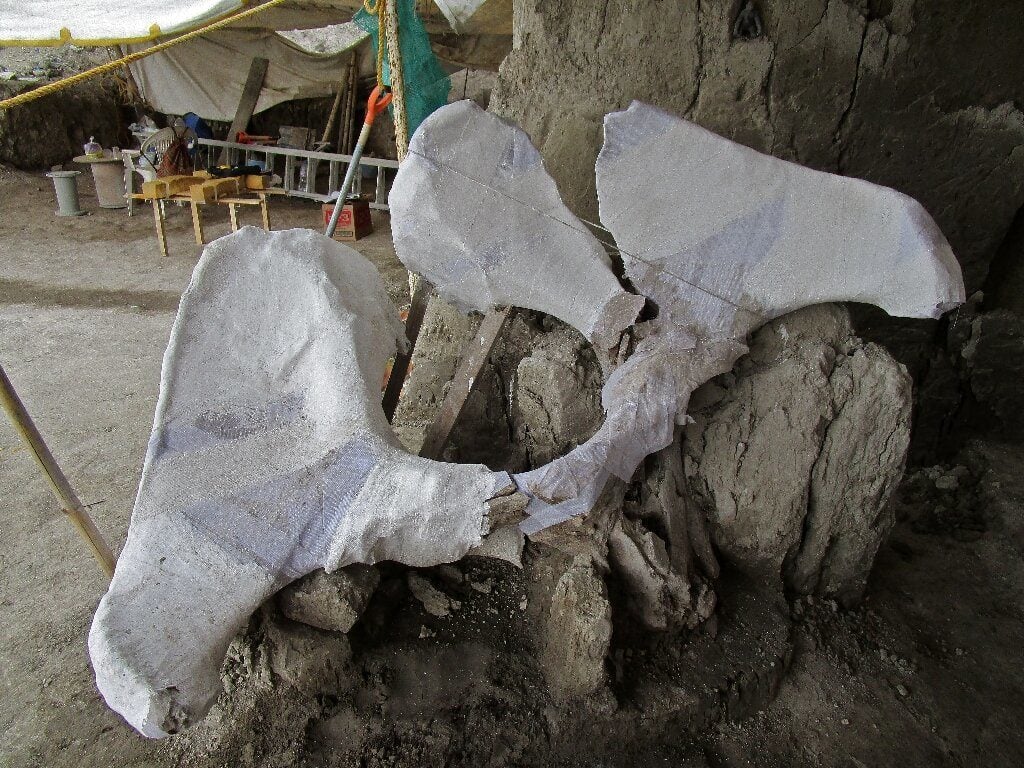Art World
Mexican Archaeologists Just Unearthed a Humongous Mass Grave Filled With Mammoth Skeletons
More than 800 bones were found in the “world’s first mammoth trap.”

More than 800 bones were found in the “world’s first mammoth trap.”

Caroline Goldstein

Archaeologists in Mexico have unearthed a mammoth discovery—literally.
More than 800 bones belonging to at least 14 mammoths were found in what is believed to be a human-made pit dug some 15,000 years ago. The excavation of a site in Tultepec, Mexico, revealed the skeletons, which Mexico’s National Institute of Anthropology and History described as “the largest find of its kind ever made.”
The pits measured around 80 feet in width, large enough to contain the gigantic tusks and other skeleton fragments of the huge creatures, which could weigh up to six tons.
According to researchers, one of the skulls bore the mark of a spear wound, but most of the animals’ remains were fully intact, leading scholars to believe that hunters chased the animals to the mass grave, perhaps scaring them with lit torches, until they fell into the pit. Experts are now calling it the “world’s first mammoth trap.”
Speaking to the Associated Press, the leader of the excavation team, Luis Córdova Barradas, said there was evidence that the area was home to around six herds of mammoths, and with this discovery, there is finally “evidence of direct attacks on mammoths. In Tultepec we can see there was the intention to hunt and make use” of the animals.
The site was discovered as workers were clearing the area for a planned garbage dump ahead of the construction of a new airport to serve Mexico City under the government of president Manuel Lopez Obrador.
See more pictures from the epic discovery below.

Mammoth bones discovered in Tultepec, outside of Mexico City. Image courtesy of Mexico’s National Institute of Anthropology and History.

Mammoth bones discovered in Tultepec, outside of Mexico City. Image courtesy of Mexico’s National Institute of Anthropology and History.

Mammoth bones discovered in Tultepec, outside of Mexico City. Image courtesy of Mexico’s National Institute of Anthropology and History.